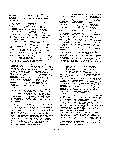 and was published privately. The elder Linebarger, who spent much of his time in France in semi-retirement died while on a visit to the USA in 1939.
and was published privately. The elder Linebarger, who spent much of his time in France in semi-retirement died while on a visit to the USA in 1939.
Dr. Linebarger continued to read science fiction during this period. His major discovery during the 1930's was the philosophical S.F. of Olaf Stapledon whom, according to his widow, he admired very much. That he was familiar with Stapledon is extremely significant, as there are striking parallels between the general conceptions in LAST AND FIRST MEN. THE STAR MAKER and SIRIUS and those in the epic of the Instrumentality.
A number of manuscripts from this period are extant. Among them are such items as 'General T'ang in Valley Dang' (1937) 'The Pure Discourse' (~938), 'Alauda Duima' (1939) and 'Noon in Adrianople' (194~). They range from tales about life in China to anecdotes about modern times. One of the former 'The Slayer in the Tomb' (1937), is quite significant in relation to Dr. Linebarger's later science fiction. Set in the period of the Han dynasty, it uses the same "legendary" style as that of the later Instrumentality stories such as 'The Ballad of Lost C'Mell' and 'The Dead Lady of Clown Town'.
With the outbreak of World War II, Dr. Linebarger was commissioned a second lieutenant in the U.S. Army. As a Far East specialist he was involved in the formation of the Office of War Information and of the Operation Planning and Intelligence Board. He also helped organize the Army's first psychological warfare section. He was then sent to China, being assigned to the headquarters of the China-India-Burma theatre. He was in charge of psychological warfare, and of co-ordinating activities of the Anglo-American and Chinese armed forces. By the end of the war, he had risen to the rank of major and won a bronze star.
While in China, he wrote his two Felix C. Forrest novels, RIA and CAROLA~ which were mailed home to his wife in installments. The dedication of the first book - "To my three first readers - at Sanhoupa, Los Alamos and the Tuyokai" - contains references to his wife, his father-in-law and his censor, in that order.
The two books are extraordinary, to say the least. Both of them are introspective psychological novels - written from a female point of view. Ria is a teenage American girl who was raised in Japan and, during a stay in Germany in the 1920's has a strange impact upon the lives of a number of people there (the novel also expresses, for the first time Dr. Linebarger's preoccupation with cats. Sardanapal is a strange feline whose owner jokingly explains is the reincarnation of a Martian scientist). Carola is a middle-class American girl who revolts against her bourgeois upbringing to marry a Chinese communist, whom she accompanies back to China to help further the Great Revolution. In China, however, her life becomes a nightmare7 and she eventually uses ruthless means to escape back to the United States. Both novels take the subjective form of remembrances of things past, with the heroines calling up their memories and trying to perceive the order in their own lives. In style and approach, both novels are totally unlike science fiction by the same author.
Nevertheless, he was also writing science fiction while in China and submitted several stories to Amazing ("he didn't feel
Astounding was his medium," his widow recalls. This was during the early Ray Palmer period at Amazing - "Between T. O'Connor Sloane and the Deros" as Fred Pohl puts it. Palmer had a policy of not bothering to look at manuscripts unless he knew the author. Dr. Linebarger's stories from this period are apparently lost, either by Palmer or himself.
In 1945, with the war over, the now Major Linebarger was given a desk job at the Pentagon. He had plenty of time on his hands then and, Mrs. Linebarger remembers, "there was an idea he'd had for quite a while." He decided to turn it into a story during his idle hours. The result was 'Scanners Live in Vain.'
The sophistication of the story was incredible then, and it seems even more incredible today in retrospect. With the first paragraph, Dr. Linebarger established not only the basic idea of the story, but its emotional impact on the protagonist, Martel, and his relationships with the "Others."
The theme of the synergy between mind and mechanism had never been so well exploited before, but the complete development of the background is just as startling: Dr. Linebarger createdt not just a society, but a culture, with its own ethics, customs, idioms - even its own mythos. Clearly, his empathic experience with many and varied human cultures had given him a unique talent to project new ones.
Yet when Dr. Linebarger offered 'Scanners' to the magazines, he ran into a brick wall. Nobody wanted the story. While it was making the rounds, he tried another, a strange amalgam of VanVogtian pseudo-science and Christian theology, involving a time traveler who experiences a series of religious visions. Some of the incidents anticipate James Blish's 'Common Time'. The story was never submitted for publication.
In 1947, Dr. Linebarger became professor
of Asiatic Politics at Johns Hopkins University's School of Advanced International Studies in Washington and that same year RIA was published. The next year it was CAROLA.
But when the publisher, Duell, Sloan and Pearce, used his Chinese name on the title page, people found out that "Felix C. Forrest"
- 7 -
Document scaning and conversion provided by Peter Barker
Updated May 12, 2015. If you have a comment about these web pages please send a note to the Fanac Webmaster. Thank you.